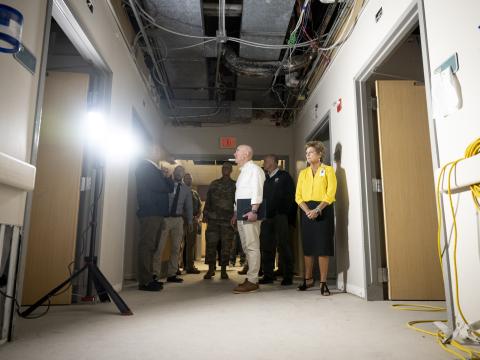Jumping to Cloud Conclusions
In a recent Op-Ed piece in the New York Times, Vivek Kundra, former federal chief information officer, made the point that in order to maximize effectiveness and efficiency in information technology (IT), the federal government and supporting industry need to leverage cloud technology and virtualization. I could not agree more that cloud and related technologies are essential assets for the government going forward to meet growing requirements for productivity, efficiency, economy and security. In fact, the government, supported by industry, already is moving aggressively in that direction, motivated in part by the plan put in place by the White House through Kundra’s efforts in his former role. 
I do not agree that cloud technologies are the right answer for every government requirement. Room remains for legitimate debate on the applicability of cloud for the most sensitive data and applications. A need also exists for careful consideration of the cloud implementation in a given situation. Whether the right answer is the public cloud, a private implementation, a hybrid or no cloud requires study. These discussions are going on in government and industry. It should not be assumed that, because someone in government or industry challenges the use of cloud technology in a given situation, they are fighting the problem.
In the same New York Times article, Kundra, now a fellow at Harvard University, alleges that industry, working together as an “IT cartel,” has, and continues to work against, government to perpetuate legacy and proprietary technologies. This is just wrong. I have been in the government information technology business for more than 40 years: in government, in industry and now in the nonprofit environment. My experience is that industry has been trying for decades to promote commercial technologies and best commercial practices for use in government. Over the years, significant progress has been made and commercial technologies, supported by best-practice processes—including cloud—are in use widely across government. Industry best can meet government requirements and be most competitive by using such commercially available technologies. The government information technology industry is one of the most competitive in the world because of the number of players and the low barriers to entry. The term “cartel” implies some degree of collusion that does not exist in this market because even the largest companies are fiercely competitive.
It is important to remember that requirements originate in government, not industry. The acquisition process works best when good communication takes place among government, industry and academia, so that requirements can be examined and the best solution is derived collaboratively. It is not productive to point fingers at government or industry and suggest that there is a conspiracy to inhibit progress. The information technology acquisition process is cumbersome, often sharing characteristics with acquisition of major weapons systems. This process often prevents effective communication between government and industry, resulting in a poor understanding of requirements. Much effort has been applied through the years to improve the information technology acquisition process, and effort continues today. The focus of both government and industry should be to improve those processes and ensure effective, competitive acquisition of the right solutions to meet government needs, including cloud.
A number of issues with respect to governance, data privacy, security and control must be addressed for the various classes of government data and applications. Legitimate concerns exist that Kundra seems to ignore in his New York Times article. Most in business would agree that cloud technologies offer important tools for government, but risk management is essential in planning and implementation. These issues can be addressed best by government and industry working together. Indiscriminate use of derogatory terms to describe the industry role is not useful. We all need to be working together to fix a broken information technology acquisition process and apply the best solutions to government requirements. These will include the cloud, but it would be naïve to believe that one technology will meet every requirement.
Kundra seems to have forgotten some of the hard-learned lessons from Washington on his short trip to Cambridge. Commercial technologies, including cloud, are driven largely by the consumer community. Industry as a whole considers, but does not give priority to, government requirements. These requirements simply are not a large enough percentage of the market. The defense industrial base companies that Kundra accuses of conspiracy have for years adapted commercial technologies to meet uniquely government needs for scale, mobility, adaptability and security. Let’s at least get that part right.



